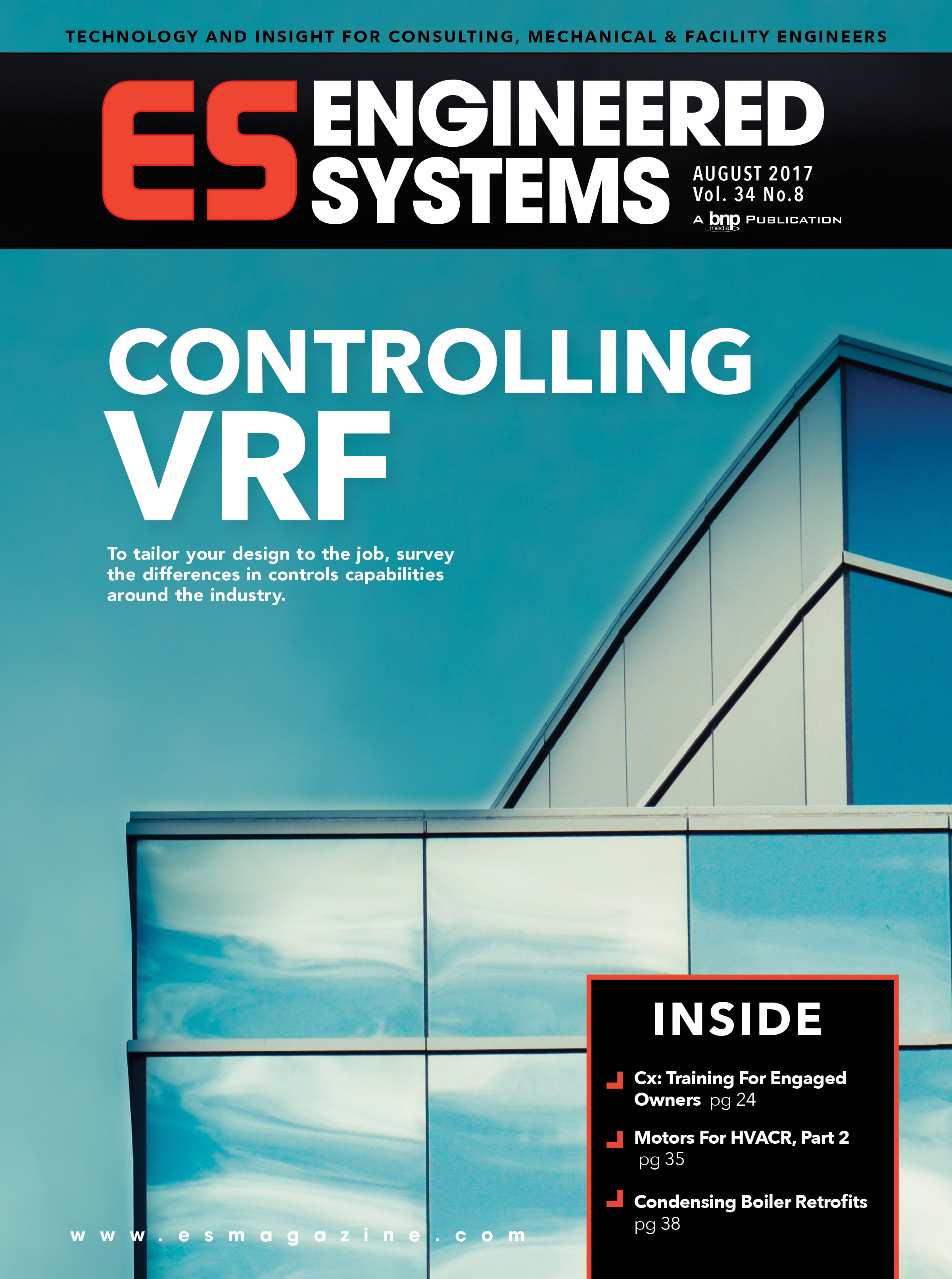At project closeout, how will the building owner now receive one complete set of record document for automatic controls? Now the sequences of operation narratives are being split among two or more closeout manuals, with the facility manager left to combine the various documents into one BAS file.
Forecasting Maintenance
On a more positive note, with controls inherently becoming computerized, the owner can now look for a more aggressive means to operate and maintain this equipment. Many of the vendors offer control packages that can inherently achieve far more then what the design engineer may have specified. One of these added-value categories is the ability to program predictive maintenance tasks, in lieu of the more traditional preventive maintenance tasks. Instead of planning maintenance, the facility manager can forecast maintenance based on specific needs making the effort more proactive, as well as more cost-effective.While the manufacturers' literature may not specifically call out predictive capabilities, it doesn't take much to recognize how the control system may be able to anticipate a potential operation problem (e.g., excessive vibration) or potential maintenance need (e.g., a dirty filter).
When selecting and specifying equipment in the design phase, the design engineer should be closely reviewing what BAS features/capabilities are available, and determine how to take advantage of monitoring and measurement components that come with the computerized control package. A simple device like a time clock can be programmed to alert the facility manager that a specific run-time for the equipment is being reached and that maintenance should be scheduled within the next week or month based on manufacturers' recommendations.
If the equipment is a chiller, it is possible that the control package comes with a means to determine the quality of the refrigerant and determine when the chiller should receive predictive maintenance based on run-time and equipment internal conditions. Other inner control points can be programmed to alert the operator of unusual operating conditions so a more proactive approach to maintenance can occur vs. a time-sensitive maintenance workorder. The difference today is that predictive maintenance is initiated through computer software on an as-need basis instead of a best-guess basis.
The filter pressure differential transmitter that is frequently specified for alarm reasons (e.g., dirty filter) should do more then simply signal an alarm. A more progressive approach is to have this alarm notify the operator of a pending maintenance workorder, so that an activity can be anticipated as opposed to being simply a nuisance alarm printout with no pre-programmed activity task. Why specify an action without a reaction? If the filter air resistance/pressure is at a point of concern based on the engineer's design, then signaling an alarm without signaling a workorder just isn't worth the money to invest in this computerized transmitter. The purchase doesn't make sense if it isn't going to be used to its full maintenance potential.
A Change For The Better
Predictive maintenance management is a culture change for those who have been writing specifications for so many years. When you are in the habit of cranking out project after project, you can begin to build a comfort level around your approach to engineering. Before you know it, you are a creature of habit, knowing the last project worked well and the company made money on the project. Changing the technical approach to the job by deviating from office standards can imply an additional obligation of time to establish a more sustainable approach to the design. Companies with standard specifications that do not keep pace with current thinking further complicate this trend by not adapting the specification to new technology or new thinking.Change for the sake of change is not good for business, but change because technology is now offering more with little or no additional cost is well worth considering. Building automation and the electronic and computerized components, devices, etc., that make up a BAS today have inherent features that should be considered particularly from the point of predictive maintenance. Programming equipment furnished software is a relatively simple and inexpensive task when considering the long-term financial benefits of maintenance on-demand that is predictive maintenance. ES

